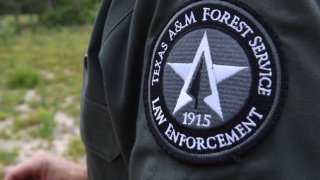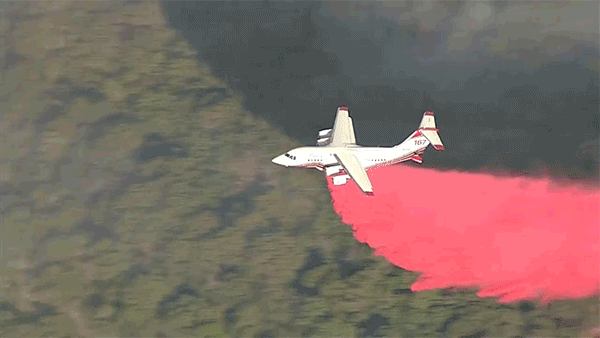
Wildfire threats continue to increase across Texas as drought conditions have returned.
Tarrant County banned outdoor burning, and Texas Gov. Greg Abbott deployed additional state firefighting resources on Tuesday.
“As the state continues to endure triple-digit temperatures and dry vegetation, Texas is deploying additional firefighting resources to assist communities that have increased wildfire activity," said Abbott. “Texans are strongly urged to take all necessary precautions and heed the guidance of state and local officials to keep their families and their loved ones safe from wildfires."
Get top local stories in DFW delivered to you every morning. Sign up for NBC DFW's News Headlines newsletter.
Severe drought conditions in unincorporated areas of Tarrant County prompted the ban, the Tarrant County Fire Marshal said in a press release.
For the next 90 days, outdoor burning will be prohibited in Tarrant County, except for cooking, welding, and the use of fire pits for social gatherings.
Interim Tarrant County Fire Marshal David Butler urged residents to remove unwanted combustible debris and vegetation from their homes and to keep water hoses accessible in the event of a small fire.
The Texas A&M Forest Service increased the Wildland Fire Preparedness Level to Level 3 due to increased firefighting resource commitment and current and expected wildfire activity across the state.
TEXAS WILDFIRE MAPS
Three state firefighting resources have been activated by the Texas Division of Emergency Management (TDEM) to support statewide wildfire response operations.
- Texas A&M Forest Service: State and local firefighters through the Texas Intrastate Fire Mutual Aid System totaling more than 350 firefighters and support personnel, as well as more than 100 pieces of equipment such as fire engines, bulldozers, and motor graders; 11 federally-contracted firefighting aircraft, including two large airtankers, a single engine air tanker for retardant drops, two fire bosses for water drops, four air attack platforms for surveillance and spotting, and two firefighting helicopters.
- Texas National Guard: Four Blackhawk helicopters with firefighting capability.
- Texas Department of State Health Services (Texas Emergency Medical Task Force): Wildland Fire Support Packages including paramedics, ambulances, and all-terrain vehicles.
Texans are asked to prepare for wildfire danger by limiting activities that cause sparks, following instructions from local officials, making an emergency plan and keeping emergency supplies readily available.
For more wildfire tips and safety information visit TexasReady.gov and tfsweb.tamu.edu.
TEXAS WILDFIRES
2011 TEXAS WILDFIRES
In April 2011, during an extreme drought, four out-of-control wildfires burning in close proximity to each other were dubbed The Possum Kingdom Complex Fire. The fires scorched 126,000 acres of parched Texas ranch land and destroyed 168 homes and two churches.
Senior Meteorologist David Finfrock said in the NBC 5 docu-series Inside the Storm: Texas Burning, that at that time the period from August 2010 to July 2011 was the driest 12 consecutive months on record.
Later that summer, in August, a second fire erupted near the lake called the PK 101 Ranch fire. That fire burned more than 6,000 additional acres on the south side of the lake and destroyed nearly 40 more homes.
On Sept. 4, 2011, a massive wildfire erupted in Central Texas. The Bastrop County Complex Fire, east of Austin, became the most destructive wildfire in Texas history. More than 1,600 homes and structures were destroyed when 32,000 acres were scorched, including 96% of the 6,565-acre Bastrop State Park. Two people died in the fires.
During that 2011 fire season, the Texas A&M Forest Service said more than 31,000 fires burned more than four million acres across the state and destroyed 2,947 homes.



